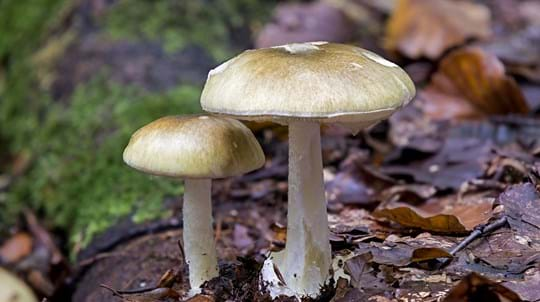
Blog
Poisonous mushrooms: 8 most dangerous UK mushrooms
Hanako Shimada • 19 Feb 2025

Content manager, botanist and tree lover
What poisonous plants might you come across on a woodland walk? Here's our list of some of the more common poisonous plants with tips on how to recognise them, what makes them dangerous to people and dogs and other intriguing facts.
These plants are beautiful and a vital part of the ecosystem - many are a food source for other species, especially pollinators. So enjoy looking at them but take care and don't touch them.
Deadly nightshade, with its ominous reputation, has purple-green, bell-shaped flowers and un-toothed, oval leaves. The berries are green and they ripen to black. You’ll find it mainly in the southern half of the UK in woodland, along paths and in scrubby areas.
All parts of the plant are toxic, but the berries are especially poisonous. They contain a mixture of tropane alkaloids that affect the nervous system. Atropine, in particular, causes severe symptoms in humans, including sweating, vomiting, breathing difficulties, confusion, hallucinations and potential coma and death. It also has a pupil-widening effect that was known in ancient Greece. An extract of 'belladonna' (Italian for 'beautiful woman') was used to make eye drops which were applied by women to dilate their pupils.
You'll see this familiar woodland plant, with its tall spikes of pink and purple flowers, in early summer. It grows throughout the UK, along woodland edges, roadside verges and hedgerows. It's also a common garden plant.
Foxglove plants contain toxic cardiac glycosides. Ingestion of any parts of the plant (and often the leaves usually as a result of misidentification for comfrey, Symphytum officinale) can result in severe poisoning. Symptoms include nausea, headache, skin irritation and diarrhoea. In severe cases it can lead to visual and perceptual disturbances and heart and kidney problems.
Foxgloves have also widely been used in folk medicine, and in conventional medicine, their cardiac glycosides have been used to make a heart stimulant drug.
Also known as cuckoo pint, you’ll find this plant in woodland and along hedgerows. It has large, arrow-shaped, purple-spotted leaves at the base of the plant. Its flowering spike has a yellow-green hood (technically known as a spathe) surrounding the flower spike (spadix). Its berries are green, orange or red, depending on their ripeness.
Take care when handling this plant. All parts of it can cause allergic reactions, but the berries are particularly poisonous. The plant contains minute needle-shaped crystals which can severely irritate the skin. Consumption can lead to throat swelling, breathing difficulties and stomach irritation. It’s rare to accidentally eat large quantities of this plant because it has an acrid taste and gives a tingling sensation which acts as a warning.
Also known as Adam and Eve or devil’s helmet, this is one of the UK’s most poisonous plants. It’s widely naturalised, but may be native in damp woodlands, meadows and along ditches in the southern half of the UK. Its attractive hooded blue flowers have made it a popular garden plant and you’ll find cultivars in varying colours including pink, yellow and white. Its flowers grow on tall spikes that bloom between June and September.
All parts of the plant are poisonous, particularly the roots. If ingested, it can cause stomach pain and dizziness. The poison also affects the heart and in large amounts can be fatal, but poisonings are rare as it has such an unpleasant flavour. Toxins can even transfer to the skin via cuts, so it is important to always wear gloves when handling plants in your garden.
Several species of Aconitum have been used as arrow poisons. They have been used in the Aleutian Islands in Alaska to poison harpoon tips used in whaling.
Poison hemlock is sometimes confused with other species in the Apiaceae family such as cow parsley. It’s a large plant up to 2m tall, with hollow, purple-blotched stems. The mature plants have an unpleasant smell apparently similar to mouse urine. You’ll find it in damp areas along the edges of woodland, along ditches, streams and roadside verges.
It contains several toxic alkaloids including coniine and is poisonous to humans and livestock. Consumption of just a small amount of any part of the plant can cause respiratory paralysis and death.
There are some really common plants that cause canine poisoning, especially spring bulbs. Incidents of poisoning from bulbs are most likely to occur when dogs dig up and eat the bulbs either in autumn when they are planted, or in spring when they begin to flower.
Daffodil bulbs, stems, leaves and flowers can cause poisoning in dogs. Effects include vomiting, stomach upset and salivation, but can escalate to dogs appearing sleepy, wobbly on their legs, or collapsing. In more serious cases it can result in changes to heart rate, body temperature and blood pressure, and even lead to a seizure. Dogs can also become unwell water from a vase containing daffodils is drunk.
Tulip bulbs are the most poisonous part of the plant, but the stems, leaves and flowers are also toxic. Ingestion can irritate the mouth and gastrointestinal tract and lead to drooling, vomiting and diarrhoea. Serious cases are rare but can include heart problems and breathing difficulties.
Crocus plants are said to be of low toxicity and may only cause a mild stomach upset if eaten. Don't confuse the spring flowering crocus (Crocus genus) with autumn flowering crocus (from a different genus - Colchicum autumnale). Ingestion of the bulbs of autumn crocus can cause severe stomach upset, kidney and liver problems and bone marrow depression.
It's not surprising that tomato plants are poisonous since tomatoes are in the same family as deadly nightshade (Solanaceae). The leaves and stems can cause stomach pain, weakness, difficulty breathing and slow heart rate if ingested. The actual tomatoes are okay as long as they’re ripe.
All parts of a rhododendron plant including the leaves, stems and flowers are toxic to dogs. Even ingestion of small amounts of the plant can cause health problems. Small dogs typically experience more severe toxic effects than large dogs eating the same amount of rhododendron.
Don’t leave anything to chance - contact your vet immediately for advice and don’t wait for any possible symptoms to develop. The quicker you get medical attention for your dog, the more likely its chance of recovery.

Blog
Hanako Shimada • 19 Feb 2025
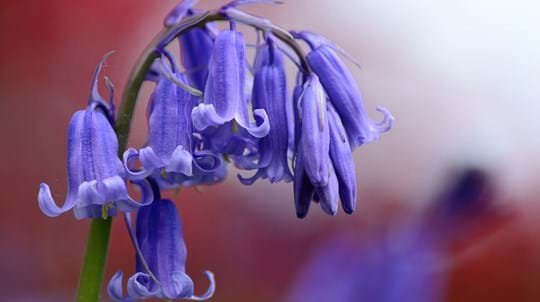
Blog
Hannah Vickers • 06 Apr 2020
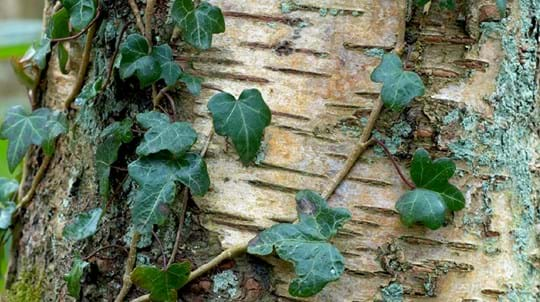
Blog
Kate Lewthwaite • 17 Aug 2021
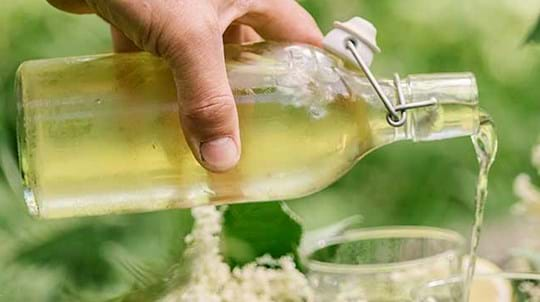
Visiting woods
See what's in season with our guide to sustainable foraging with top tips on how to pick, cook and eat wild plants.
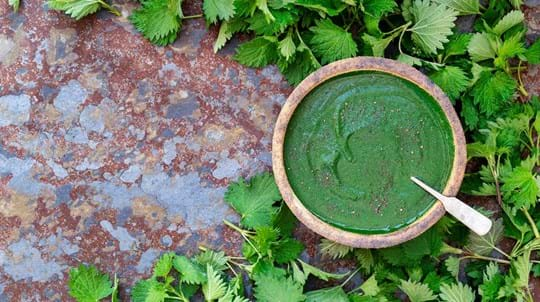
Blog
Helen Keating • 23 Apr 2020
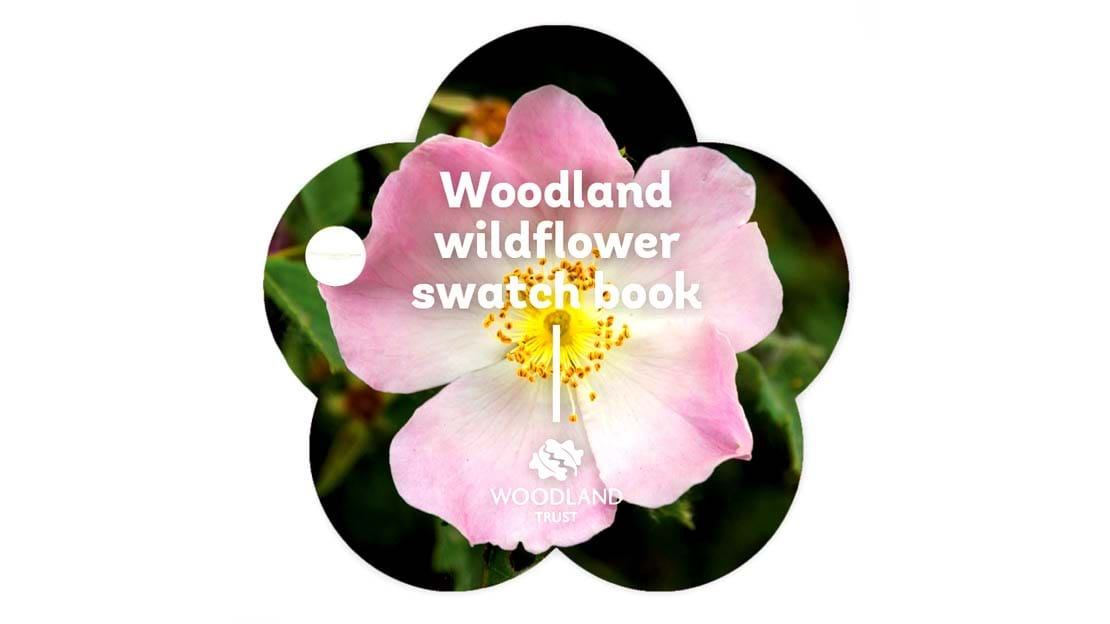
Discover wildflowers when you're out and about with your mini pocket guide to the UK's common woodland plants.
Visit our shop